In Search of the Perfect LoafA Home Baker’s Odyssey
Entertaining and inspiring, this book will be a touchstone for a new generation of bakers and a must-read for anyone who wants to take a deeper look at this deceptively ordinary, exceptionally delicious staple: handmade bread.
In 2009, journalist Samuel Fromartz was offered the assignment of a lifetime: to travel to France to work in a boulangerie. So began his quest to hone not just his homemade baguette—which later beat out professional bakeries to win the “Best Baguette of D.C.”—but his knowledge of bread, from seed to table.
For the next four years, Fromartz traveled across the United States and Europe, perfecting his sourdough in California, his whole grain rye in Berlin, and his country wheat in the South of France. Along the way, he met historians, millers, farmers, wheat geneticists, sourdough biochemists, and everyone in between, learning about the history of breadmaking, the science of fermentation, and more. The result is an informative yet personal account of bread and breadbaking, complete with detailed recipes, tips, and beautiful photographs.
“Thoroughly researched and engagingly written….This impressive work falls somewhere between a cookbook, an exploration of bread-baking techniques, and a history of bread….Even those who think they know bread will find something to gain here….Highly recommended.”
–Library Journal, starred review
“[A] fun and informative memoir [that] provides a fascinating miniature course on the techniques involved in making different varieties…baking methods used by our ancestors…and even a little history on grains and practices dating back to the Fertile Crescent.”
–Publishers Weekly
“A consummate celebration of the deceptively simple loaf of bread…Besides imparting a history of grains and their places in culture over the past 105,000 years (when grain consumption appears to have begun), Fromartz includes step-by-step recipes for nurturing dough starters and for baking baguettes, flatbread, rye bread (which he learned to make in Berlin) and a loaf made from an artisanal grain, Turkey Red wheat….Richly detailed [and] lively.”
–Kirkus Reviews
“This fascinating, beautifully written memoir reveals Sam Fromartz as that rare breed of cook: craftsman, historian and scientist all in one, following his senses and questing after what is delicious, authentic, and pure.”
–Alice Waters, vice president of Slow Food International, owner of Chez Panisse, and author of The Art of Simple Food
“In this lovely book, Sam Fromartz offers a signature mix of baking insights and wonderful storytelling as he hits the road to find his perfect loaf. If you make bread—or ever intend to—you need to read this book.”
–Ruth Reichl, former editor-in-chief of Gourmet and author of Delicious!
“Sam Fromartz’s odyssey teaches us that being a great baker takes more than simply following recipes–it is a relentless quest. His conversations with bakers and then his reinterpretation of their lessons at home is a double education. I love this book.”
–Nancy Silverton, founder of La Brea bakery and author of The Mozza Cookbook
“In Search of the Perfect Loaf is really the best kind of read—a quest for true bread enriched by research, knowledge and pleasure. The passion Sam Fromartz brings to this journey is incredible and infectious. Fromartz is generous in sharing his baking intel, but the real recipe for delicious bread, we learn, begins long before the kitchen. This book will change the way you look at bread.”
–Dan Barber, co-owner/executive chef of Blue Hill and Blue Hill at Stone Barns and author of The Third Plate
“In his search for the holy grail of baguettes, Sam Fromartz has beautifully captured the joys, loneliness, frustrations, and rewards of his bread making journey. And, wonderfully for us, he shares both the life and baking lessons learned from the many amazing people he met along the way. You will want to bake from this book.”
–Peter Reinhart, author of The Bread Baker’s Apprentice and Bread Revolution
“This book makes the reader reexamine a subject truly overlooked: the culture of the baker and, in particular, of bread. Through his quixotic quest to find and learn how to make the perfect bread, Sam Fromartz brings us into the bakery and illustrates and captures the essence of what bread culture is. It is an exquisite work, written with passion and expertise. With many of the stories, Fromartz helps the reader understand the mind of the baker. He himself is truly obsessed, and this book is ideal for anyone wishing to further their knowledge of the subject of what craft or artisan baking is and ought to be. He presents, through the lives and stories of other practitioners of the craft, a future for bread which is both meaningful and dignified.”
–Jim Lahey, owner/founder of Sullivan Street Bakery and author of My Bread
“If you love great bread, you will love this book! Inside, Sam shares his journey in search for the perfect loaf, baking with some of the most inspirational and leading bakers of our time. From Paris, to Berlin, to Marienthal, Kansas, we follow Sam on his quest as he shares his love for great bread and the ‘baking secrets’ he learned along the way. I read this book with my favorite music in the background, in my most comfortable chair, a glass of wine in hand, and a rustic loaf of bread.”
–Daniel Leader, founder of Bread Alone Bakery and author of Bread Alone: Bold Fresh Loaves from Your Own Hands
“Great bread is one of life’s simple pleasures, and this book captures so much of what is inspiring in the realm of bread baking right now. From California to Berlin, we meet passionate, committed bakers, and see how Sam translates their craft to the home kitchen. Bread geeks will love it, but so too will those wondering about all we’ve lost in our daily bread—and what we might recapture.”
–Heidi Swanson, author of Super Natural Every Day
“Fromartz is a passionate, deeply serious home baker who writes eloquently and gracefully about what it takes in skill and ingredients to produce a delicious baguette or country loaf. His account of the history and comeback of heritage wheat grains is a revelation that will send even the most gluten-phobic reader to search for breads made from them. In Search of the Perfect Loaf is a lovely book—a perfect read for anyone who cares about good food.”
–Marion Nestle, professor of nutrition, food studies, and public health at New York University and author of Eat, Drink, Vote: An Illustrated Guide to Food Politics
“Fromartz has managed to elevate the humble loaf of bread into a riveting tale of history, passion and practical technique along with a rare glimpse into the workings of early morning bakeries from Paris to Berlin to San Francisco. You won’t look at bread the same way again.”
–Kathleen Flinn, author of The Sharper Your Knife, the Less You Cry and Burnt Toast Makes You Sing Good
EMMER FLATBREAD
Makes 12 flatbreads (easy)
The hardest part about this recipe is getting hold of emmer flour, which is pretty rare and can be pricey. But if you do find it, dive in. I tried this recipe with 100 percent emmer flour, but found the taste too assertive, so I mixed it with an equal portion of whole wheat flour. (If you want a milder version, mix the emmer with white flour, but cut back on the water slightly.) Although the recipe calls for the dough to sit for as long as 8 hours, you can use it far sooner, though the flecks of bran may be more noticeable.
Tools
Bowl
Plastic wrap
Plastic dough scraper
10-inch cast-iron skillet
Rolling pin
Spatula (optional)
Flatbread Ingredients
200 grams whole wheat flour, plus more for the work surface
200 grams emmer wheat flour (if unavailable, use whole wheat)
265 grams water
2 tablespoons vegetable or olive oil, plus more for the bowl
7 grams salt
Emmer Flatbread
Morning
Combine the flours, water, oil, and salt in a bowl until they come together into a mass. Cover and let sit at room temperature for 20 to 30 minutes while the flour absorbs the water.
Transfer the dough to a lightly floured work surface and knead for about 5 minutes by pushing down on and spreading the dough and then folding it over on itself. It should be smooth and elastic. Form it into a ball and place it in a clean, oiled bowl. Cover with plastic wrap and let the dough rest for 4 to 8 hours.
Afternoon or Evening
About 45 minutes before you want to bake, spread out the dough on a lightly floured counter, cut the dough in half with a dough scraper, and roll it into 2 logs. Cut each log into 6 pieces. You should have 12 pieces of dough that weigh about 55 grams each; evenly distribute any leftover dough.
Shape each piece into a ball. Let the balls rest for 30 minutes at room temperature under plastic wrap.
Place a cast-iron skillet over medium-high heat and let it heat up for several minutes.
Mean while, liberally flour a work surface. Flatten a dough ball and dust it lightly with flour, then use a floured rolling pin to roll it out as thin as possible (7 to 9 inches in diameter), rotating the disk to keep it even. If it resists, let it rest for a few minutes and continue rolling again. Cover the disk with a towel. Repeat with the remain- ing dough.
When the skillet starts smoking, gently lift a disk of dough. Place it in the skillet, cook it for about 30 seconds, and then turn it over with your fingers or a spatula for another 30 seconds. Remove
the skillet from the flame and, holding the flatbread by its edge, put it directly on the fire. Keep moving it in a circle so that it doesn’t burn, then turn over and repeat. The bread should be blistered and dark in spots.
Remove the flatbread and cover it with a towel or aluminum foil to keep it from forming a crust. (Dot it with butter and fold it in half if you like.) Repeat with the remaining disks of dough. Serve warm. These can be made in advance and stored in a reseal- able plastic container on the counter for a couple of days. But theyare best eaten fresh.
From IN SEARCH OF THE PERFECT LOAF by Samuel Fromartz. Reprinted by arrangement with Viking, a member of Penguin Group (USA) LLC, A Penguin Random House Company. Copyright © Samuel Fromartz, 2014.
Introduction
It was December 2008, two months after Lehman Brothers imploded and a week before Christmas, when I got the call. One of my editors at a university magazine wouldn’t be needing my services anymore. Budget cuts were under way. Even he didn’t know how long his job would last. I hung up. Forty percent of my free- lance income had just evaporated. I went out for a walk on that chilly morning in Washington, thinking how typical this was— the news coming just before Christmas. When I worked years ear- lier as a business reporter, I had covered these announcements of thousands of people cut, usually on Fridays, just before the holi- days. After walking around the manicured lawns of the U.S. Cap- itol, I came back to my desk only to get more bad news. In disbelief, I listened as another editor, a good friend of mine, told me how he was being forced to end contract work. He hoped to keep me on but things didn’t look good. Sit tight for two or three months, he said. So in one day, I’d lost perhaps three fourths of my income. I looked at the picture of my young daughter staring back at me from my desk.
Freelancing is often filled with ups and downs, but that’s okay. It comes with the territory. The goal is to mix and match different projects, scraping by through lulls and working late or on week- ends when things are really busy. But this was no lull. In a decade of freelance journalism, I had never experienced anything like this.
Since much of this contract work comes from people I know, I got busy, really busy. I started to send out e-mails to every friend, colleague, and former colleague who might know of work. I got a couple of responses pretty quickly, including one from an editor I had known for years, who was now heading a travel magazine start-up called Afar. A travel magazine in a near depression, the worst since the 1930s, when airline seats were going begging? I didn’t ask. This was a lead. A few days later I talked with her and you could hardly tell how bad things were. She described jaunts by writers to Madagascar, Venezuela, and Morocco. It was all about “experiential travel”—diving into the culture of a place rather than following the guidebook. Naturally, food was a big focus. Appar- ently this kind of immersion travel was a passion of the founders, who were committed to the magazine, recession or not. So did I have any ideas?
“Sure,” I stammered, trying to think of something fast. “You know, I’ve always wanted to visit Paris and work in a boulangerie, because I’ve never been able to make a true baguette.” Then I launched into the backstory: How I’d been baking at home for more than a decade, and how I always thought I could benefit from doing a stint at a real bakery. Though it was true that I’d fantasized about this, the destination I’d had in mind was Portland, San Fran- cisco, Vermont, or New York. But on the spur of the moment, with the travel editor on the line, my destination had suddenly become Paris. After all, I spit out, a new wave of French artisan bakers had rescued bread—that national cultural symbol—from years of ne- glect, bringing back truly great loaves. So yes, maybe ten days in Paris would do it. Could I line this up in a couple of weeks and go soon after that? Maybe get the article in on time for their premier issue? “Sure,” I replied, knowing not one baker in Paris. Three weeks later, early in 2009, I was on a jet to Charles De Gaulle airport, surrounded by rows and rows of empty seats.
I felt like I had scored the ideal gig, but it also felt odd because I had rarely conflated my bread-baking hobby with work. Making bread was that special moment of the day when I could take my hands off the keyboard, stand up from my chair, and go downstairs to the kitchen and play with flour, water, sourdough, and salt. In- stead of wasting time surfing the Internet on breaks, I would rum- mage through a cabinet filled with wheat, rye, and spelt flours; gathering sesame seeds and flaxseeds and tending to my sourdough starter. In this way, baking was the antithesis of writing, my ver- sion of chopping wood, crucial to maintaining my sanity amid the daily pressures of work. And that’s the way I wanted it. Cordoned off from writing, baking offered a brief reprieve, and for many years I sought to keep it that way.
But now, faced with a crisis and the need to generate work, any work, I had become pragmatic. This baguette excursion was the rationale to go deeper into bread and get paid at the same time, but I also knew that for a home baker the exercise wouldn’t be easy. Even if I did learn to master a baguette in a boulangerie, I would need to translate the technique to my home kitchen. I wouldn’t achieve a great baguette in a day or even a week. I knew, because I had tried many times and finally given up, convinced that a decent baguette couldn’t be made at home. But standing next to a baker, and one in Paris no less, maybe I could learn that one tip or technique that would fundamentally alter what I did. If so, if I really got that kind of “aha!” moment, the entire trip would be worth it. So the ba- guette became many things: a story, an unexpected source of in- come, and a challenge, for this bread had defeated me. But it also became something else—a template that I would later repeat with professional bakers in the United States and Europe, applying the same hands-on approach to bread-making problems I so often en-countered at home. I thought this work would bring me much closer to the perfect loaf, but what I didn’t appreciate was how this quest would fundamentally alter the way I viewed bakers, grains, and this basic sustenance, bread.
Bread was always a part of my life, even if I didn’t get interested in bread making until well into adult life. I never recall a time growing up in Brooklyn when we didn’t have bread on the table. To be honest, there was usually bread and rice, representing the two cultural poles of my upbringing. My father, who came from a family of Russian Jewish immigrants, liked bread with every meal. My mother, who is Japanese American, usually had a pot of rice on the stove. This rich personal relationship with starches, from Japanese short-grain rice to Russian black bread, has become part of my identity.
My dad’s family had emigrated from Kiev in Ukraine at the turn of the twentieth century. But the links to our Russian heritage were indirect, for I don’t remember eating anything in particular with my grandparents. There was no quintessential “Nana” food, no memorable dishes, no homemade loaves. Instead, the Jewish foods associated with New York—knishes, blintzes, pastrami, matzo ball soup, smoked fish, pickles, and, yes, bread—figured as prominently for me as they did for many New Yorkers, whether you were Jewish, Chinese, or Puerto Rican. Sometimes we got pumpernickel or a seeded rye at a Jewish bakery on Church Avenue in Brooklyn, or Levy’s Jewish rye, which I liked toasted. “Where’s the broyt?” my dad would ask at dinner, using the Yiddish word for bread. On Sundays, we often had fist-size bagels with cream cheese and Nova Scotia lox or smoked whitefish, which we picked up on Flatbush Avenue after ice skating at the Wollman Rink in Prospect Park. I still recall the bakery, with the white-haired guys in aprons and hats, turning the steaming bagels off wet wooden
From IN SEARCH OF THE PERFECT LOAF by Samuel Fromartz. Reprinted by arrangement with Viking, a member of Penguin Group (USA) LLC, A Penguin Random House Company. Copyright © Samuel Fromartz, 2014.


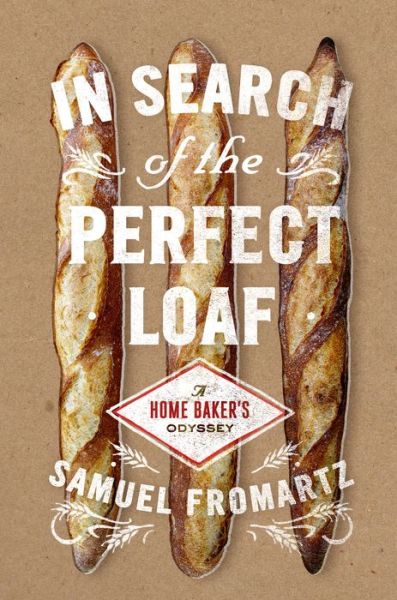



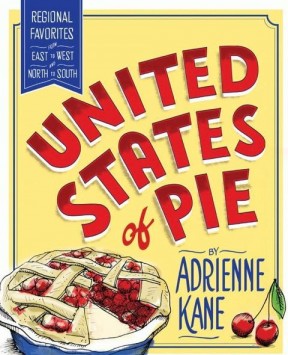
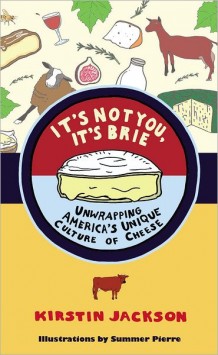

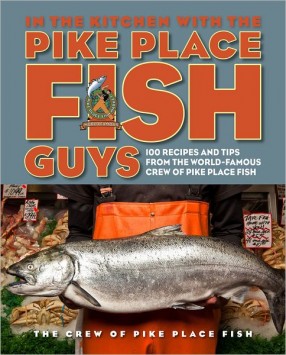
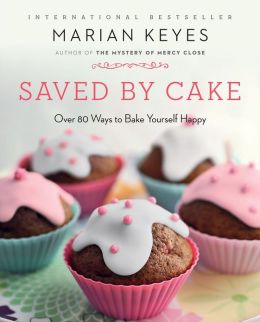
Leave a Reply